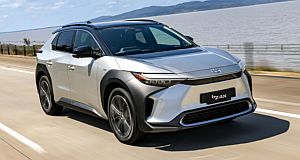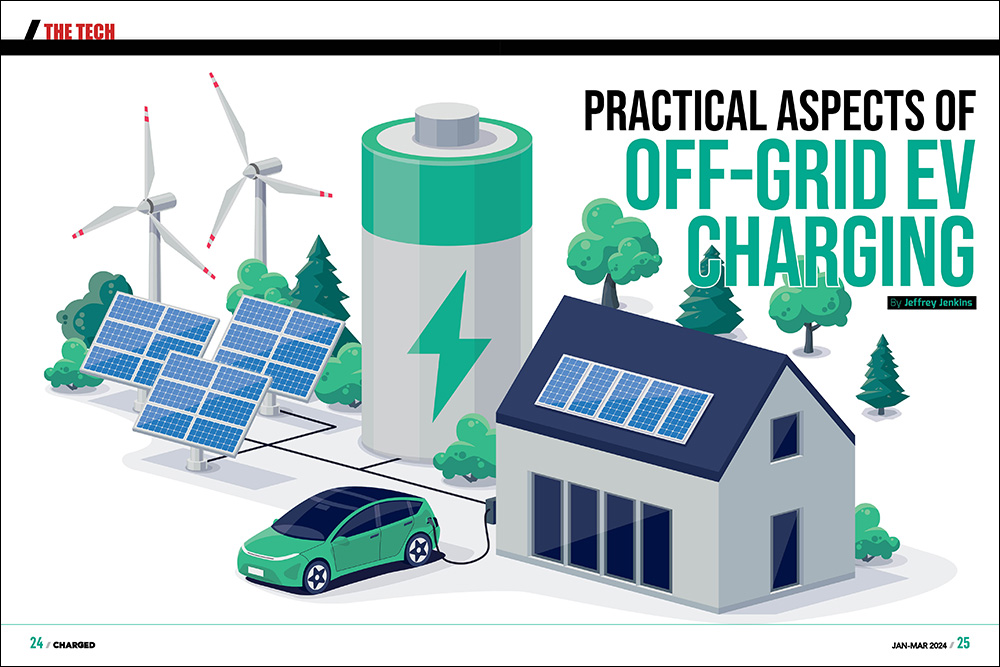Overview
FIRST times can be awkward but thankfully, Toyota’s first electric vehicle – the new bZ4X SUV – comes across as a pretty confident first go at the whole EV thing.
The brand is offering two different versions of the bZ4X EV at launch, with the base model front-wheel drive (FWD) model kicking off at $66,000 +ORCs, and the more richly specified bZ4X AWD at $74,900 +ORCs.
And for those that are concerned about the depreciation factor, or maybe just whether an EV will actually work for them, there’s the option of a full-service lease so customers can use a bZ4X for three years, and not have to worry about depreciation, nor rego, tyres, insurance and a number of other running costs. It isn’t cheap, though – check the Toyota website to see the costs for your own circumstances.
The bZ4X is hitting the market smack bang in the midst of the biggest-name and most-established players, including the Tesla Model Y (from $65,400 +ORCs), Kia EV6 (from $72,590 +ORCs), Hyundai Ioniq 5 (from $65,000 +ORCs) and its mechanically-related counterpart, the Subaru Solterra, which starts at a higher $69,990 +ORCs but has dual-motor all-wheel drive as standard unlike all of the other vehicles mentioned here.
For the Toyota model there are some spec differences besides just the added rear electric motor for the AWD variant to help justify its sizable price jump including a surround-view camera system, semi-autonomous parking, and a kick sensor for the electric boot but both have an array of great goodies for the money.
Standard is LED exterior lighting, 20-inch wheels, keyless entry and push-button start, a 12.3-inch touchscreen media system with wired/wireless Apple CarPlay and Android Auto, sat nav, a 7.0-inch driver info screen, heated front seats, electric adjustment for the front seats and more.
The entry-level version has a pretty punchy powertrain, with a single electric motor mounted at the front axle producing 150kW and 266Nm, while the dual-motor AWD version has 160kW and 337Nm. Both use a 71.4kWh lithium-ion battery pack, but there are slight differences in claimed EV driving range, with the FWD good for a WLTP-rated 436km versus 411km for the AWD.
Choose FWD, and the 0-100km/h time is 7.5 seconds, while the AWD punches its card at 6.9sec.
Recharging is 11kW for AC charging, and up to 150kW for DC charging, with the bZ4X running a 400-volt architecture. If you can find a charger churning out at max capacity, it’ll take a claimed 30 mins from 10-80 per cent.
There are some other differences, with the AWD model bringing the Subaru-built X-Mode off-road system, with a few different settings for unsealed and snowy scenarios, and the AWD also offers more ground clearance (212mm vs 182mm).
Inside there are differentiators, too, with the lower-spec model getting a cloth and part-fake-leather (SofTex) trim on the seats, while the AWD has a full fake-leather finish, as well as cooled front seats, a nine-speaker stereo system, wireless phone charger and a heated steering wheel.
The interior might not be to all tastes, with a peculiar driving position thanks to a low-set steering wheel (similar, but not as well executed, as the Peugeot i-Cockpit), but thankfully Toyota has kept a raft of physical controls for things like climate control and fan settings, and the media screen – while somewhat convoluted in its menus – is crisp and easy to use if you’re mainly focused on smartphone mirroring.
The cabin has ample storage, with plenty of cupholders and pockets, and taller adults can fit in the back pretty comfortably, too, with enough room for me to sit behind my own 182cm driving position relatively comfortably – though like many EVs, it is quite a ‘knees-up’ seating position thanks to the higher floor level, and that’s despite lots of legroom. There are ISOFIX points and three top-tethers if you’re planning to use it as a family SUV and rear air-vents and USB ports for charging.
Boot space is decent, despite looking a little low on paper. The FWD has 421 litres (VDA) and the AWD 410L, but the boot has a flat load-in lip and it’s quite wide, despite being perhaps a little shallow, thanks to its shapely backside design. No spare wheel, though – just a tyre repair kit.
Ownership is likely to be a bit better than some other EV brands, thanks to the widespread dealer network (more than 200 across Australia), and there’s the expected five-year/unlimited kilometre warranty plan. That extends to seven years for the powertrain if logbook maintenance is recorded, and the battery warranty is up to 10 years if you service with Toyota (however, it is still covered by an eight-year warranty with a guarantee of 70 per cent state of charge).
Servicing is every 12 months/15,000km, which is more regular than some rival EVs that offer biannual maintenance intervals. But it’s cheap for the first five years, at $180 per visit.
Driving impressions
Toyota has been firing on all cylinders with its recent models in terms of the drive experience, and while that analogy seems silly here, it is still representative of the bZ4X’s character.
Look, it’s not compelling in any single way – it’s not the fastest, the “funnest”, the most luxurious or the most enticing to drive. But man, does it just get the job done in an inoffensive way.
The launch drive in and around Canberra included twisty mountain roads, urban arterial driving, traffic jams, and some light-duty off-road and unsealed driving.
Across each of those scenarios, competency shone through.
In both the FWD and AWD models there was ample pulling power, though none of that neck-snapping acceleration that some other EVs offer.
Going? Good. Stopping? Fine, too. The regen’ braking system features a single-pedal driving mode that won’t come to a complete stop (about 5km/h in traffic), but it is usable and the feel through the brake pedal is natural.
One thing that some buyers mightn’t gel with is the firm ride, which can feel a bit lumpy over sharp edges, and that’s no doubt largely in part due to the extra body stiffening for the car’s battery pack. I found it was firm but never uncomfortable, but maybe not as squishy as some others. A smaller set of wheels with higher-profile tyres could make a difference.
Despite weighing in at 1960kg for the FWD and 2055kg for the AWD, it handles the bends well, with the steering exhibiting an almost Tesla-like fast action to it with speedy direction changes but not a whole lot of feedback.
And while the all-wheel drive was seemingly very adept at handling itself in more challenging unsealed scenarios – similar to what a family might experience if they take a wrong turn on their way to the campsite – what impressed most about it was the X-Mode all-wheel drive mode selection system and the Grip Control hill descent control system which has five pre-set paces (all under 10km/h) for unsettling downhill moments.
All told, it ticks all the boxes, and would make a fine choice for someone who isn’t sold on one of its many very impressive rivals… or someone who just wants their electric car to be a Toyota.



